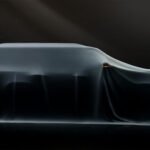Tesla’s head of Optimus humanoid robot, Milan Kovac, has announced his departure from the automaker after 9 years of service. This news comes amidst CEO Elon Musk’s bold claim that the humanoid robot program will propel Tesla into a $25 trillion company.
Kovac joined Tesla in 2016 to work on the early Autopilot program, showcasing his expertise in machine learning. His rapid advancement within the company led him to lead Autopilot software engineering from 2019 to 2022. In 2022, he transitioned to working on Tesla’s Optimus humanoid robot program, and later he was promoted to Vice President in charge of the complete Optimus program in late 2024.
Elon Musk’s grand vision for the Optimus program includes generating $10 trillion in revenue annually, ultimately transforming Tesla into a $25 trillion company. However, industry experts remain skeptical of these ambitious projections, as the humanoid robot market is still in its nascent stages. Current market estimates predict the market size to be in the low single-digit billions of dollars, with growth projections ranging from $15 billion to $80 billion by 2032.
In a personal statement, Kovac cited the need to spend more time with his family abroad as the reason for his departure from Tesla. Despite his exit, he expressed unwavering support for Elon Musk and the Tesla team.
Kovac’s departure is a significant loss for Tesla, as he was a key technical executive driving the Optimus program forward. The company has made strides in the development of the humanoid robot, but skepticism remains, particularly regarding the use of teleoperation in previous demonstrations.
Recent departures of Optimus engineers, including Zackary Bernholtz to Figure, a competitor in the humanoid robot space, raise questions about Tesla’s ability to retain top talent in this competitive field. While Musk’s vision for the Optimus program is lofty, competition from companies like Unitree in China and Figure in the US poses a significant challenge.
Investing in humanoid robots may hold promise for manufacturing companies like Tesla, but the road to success is paved with fierce competition. As the industry continues to evolve, it remains unclear which company will emerge as the leader in this burgeoning market.
While Kovac’s departure may be driven by personal reasons, the competitive landscape of the humanoid robot market leaves room for speculation about his future endeavors. Regardless of his next steps, his contributions to Tesla over the past 9 years have been commendable, and his departure marks the end of an era for the company.







